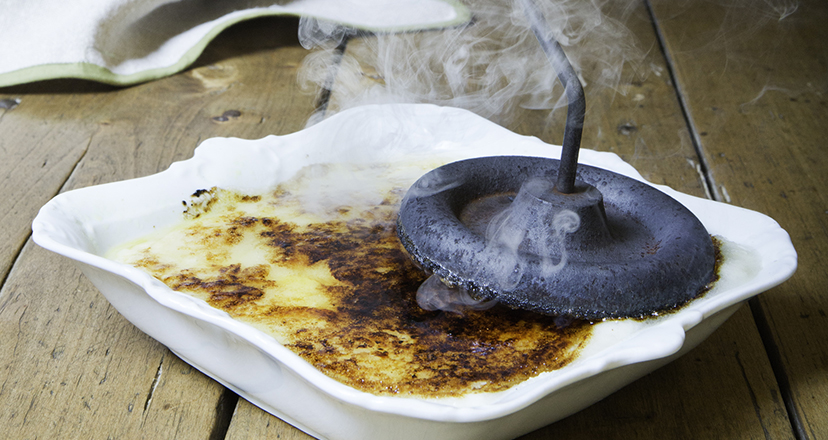Back The best dishes of mountain cuisine in Asturias
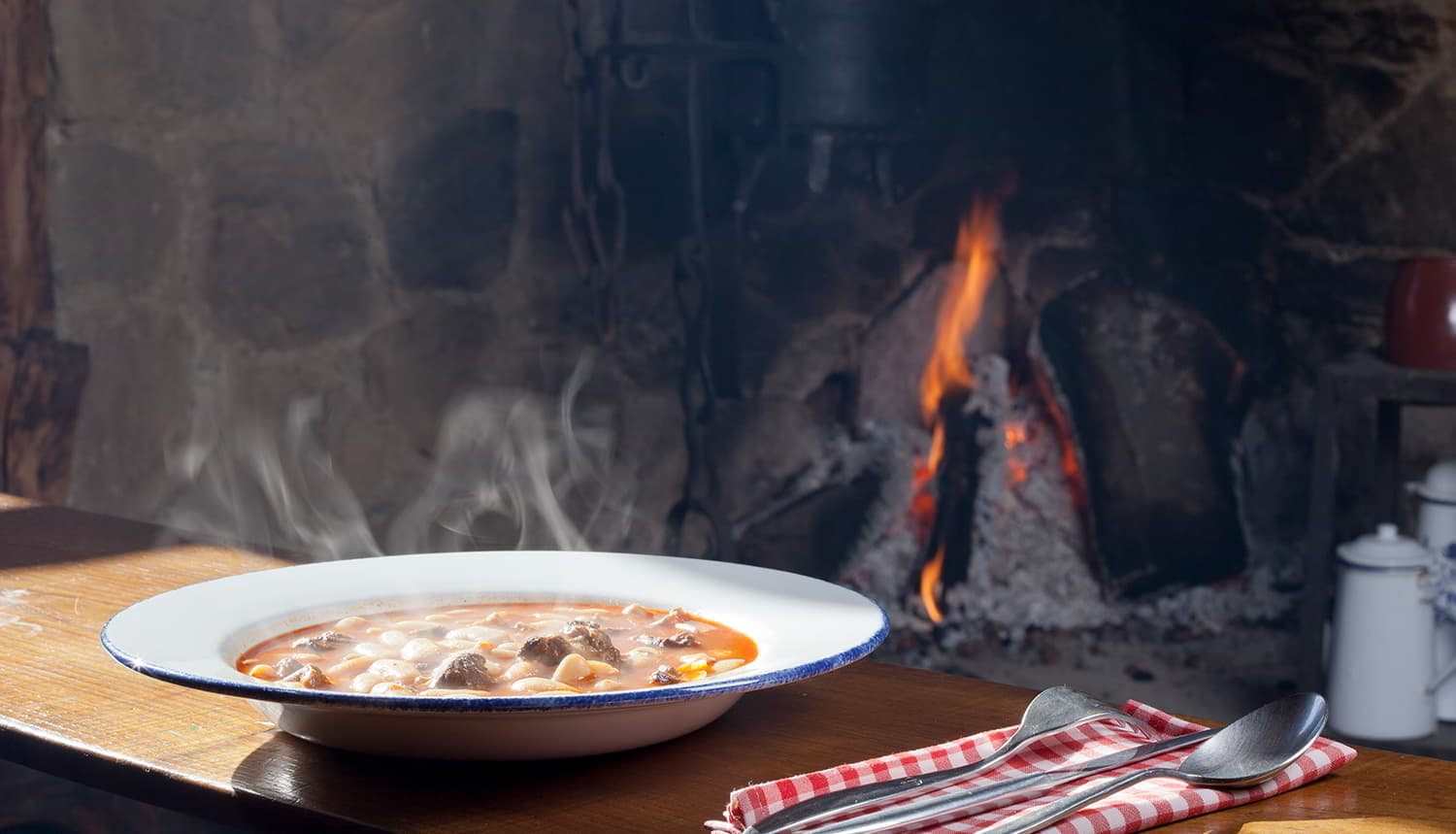
The best dishes of mountain cuisine in Asturias
There is an Asturias that requires altitude, wind and even some cold to enjoy it. The Asturian mountains not only frame a landscape, not only beautify the view: they also shelter a mountainous, powerful, warm, ancient food; full of flavours of forest, game, nuts and vegetables resistant to winters . Genuinely Asturian dishes, from inland, that require you to go deep into the territory as well as into the stew pot so that their fragrances can fill your whole body. Easy recipes, simple in their origins, but which today surprise us with their depth, the warm humour they provide and what they transmit of the people who for decades - and even millennia - have been cooking them, resisting even the harshest winters.
Today we propose a succulent journey through some of these typical dishes of Asturias, which taste best when you eat them in front of the mountain itself: looking at it and admiring it, as most of the ingredients that make up the pots, embers and frying pans come from its depths. The Asturian mountains provide, and the happy diner is grateful, especially after a good walk!
Chestnut pot
A comforting and traditional dish from Asturias that combines chestnuts with different ingredients to create a delicious mixture.
Few stews are so many centuries old in Asturias. Chestnuts were the staple food of the humble until the arrival of the potato from America. It was harvested at home and dried in the hórreos (granaries) so that it would last all year round. Asturian gastronomy cannot be understood without this domestic stew made from a wild food, which today is eaten garnished with generous side dishes: with chorizo, black pudding, streaky bacon..., and also with cabbage or cabbage.

Beef stew
A classic recipe for slow-cooked veal with herbs and spices, which brings out the authentic flavour of Asturian meat.
In some areas it is called 'carne gobernada', or 'carne de taberna', according to another terminology that has fallen into disuse. Asturian veal means a feast cooked in any way, but in a slow stew, it gives off the flavour of the mountain pastures that the cattle have eaten in a good life of freedom. The dish, of course, requires a good Cangas wine to complete it. Or perhaps cider?

Beans with wild boar
A variant of the traditional fabes (faba beans) enriched with tasty wild boar meat, which adds a distinctive touch to this dish.
The marriage of the legume that defines Asturian cuisine and the xabalín, one of the region's most distinctive game, requires special care in the cooking, so that the buttery faba beans and the powerful meat blend perfectly. A stew that never satiates. If you repeat the dish, it will also lead you to one of the most relaxing naps imaginable.
Arbeyos
A preparation of fresh arbeyos accompanied by ham and other accompaniments, offering a feast of regional flavours.
The best arbeyos are those from the village, esbillaos (removed from the pod) by hand, and cooked fresh. In stew, with ham or with any of the Asturian sausages, from chosco to sabadiego. Garlic, paprika and onion, and a little stock. And you've got your body repaired from the cold.
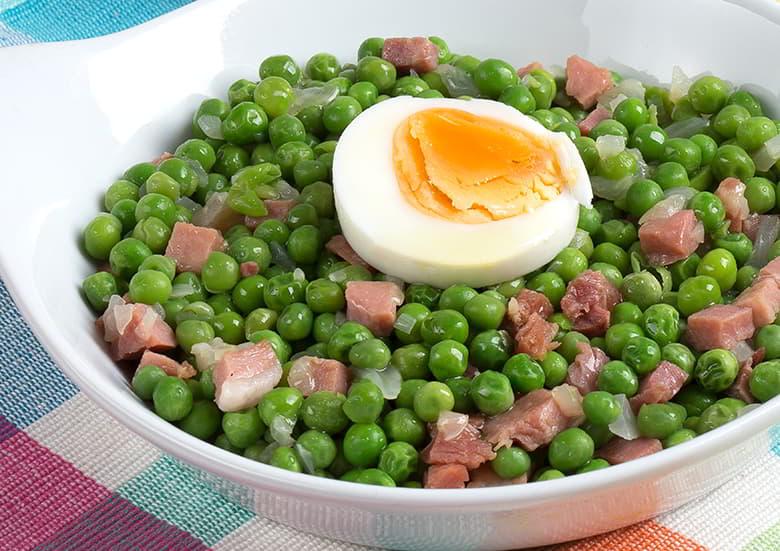
Turnip pot
A comforting mixture that highlights the sweet and earthy flavours of turnips, cooked with various ingredients to create a savoury stew.
The turnip, like the chestnut, used to be the star of ancient stews. Today it has a brotherhood that praises it and its annual festival in Sotrondio, which is held in November as one of the oldest gastronomic experiences in Asturias. The turnip stew requires at least two hours of cooking, and the best slices of pork guarding this humble but tasty cruciferous vegetable, which will surprise you if you haven't tried it before.
Wild boar stew
An exquisite dish that brings out the lean, flavourful meat of the wild boar, cooked with a mixture of herbs and spices.
The trick with wild boar, however, lies in the marinade beforehand, to deglaze the meat. Each cook has his or her own trick, a mixture of salt, spices, vinegars or citrus fruits that relaxes the mountain flavour. Afterwards, a quiet flame softens the leg, shoulder or loin until it melts in the mouth, filling it with heat.
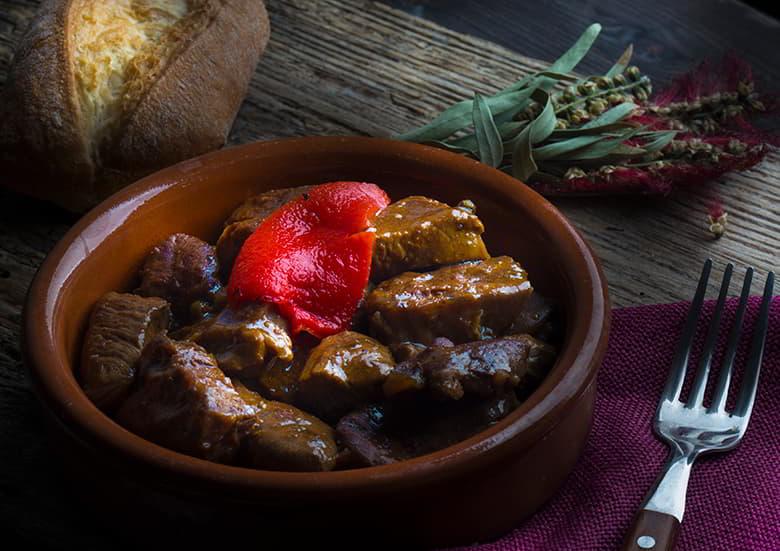
Lamb on the stake
A traditional way of cooking lamb in Asturias, where it is grilled to obtain a juicy texture and delicious flavour.
This type of roasting requires four or five hours, and a master roaster who knows how to control the fire with tact. The lamb is stuck whole around a fire, fed with oak wood, and the position of the lamb is varied as it cooks, to achieve a uniform result. Its subsequent quartering anticipates a feast like few others you will find in Asturian cuisine. The best thing is to eat it with a good loaf of Asturian bread.

Cabritu with potatoes
A dish that highlights tender kid meat, accompanied by local potatoes and seasonings that enhance its unique flavour.
It can be prepared baked or stewed, and is usually bedded with garlic, onions and peppers, among which the kid releases its delicious fat. It is typical of areas such as Belmonte, Cabrales or the mining basins, and you will know it is perfect when the meat separates from the bone by itself.
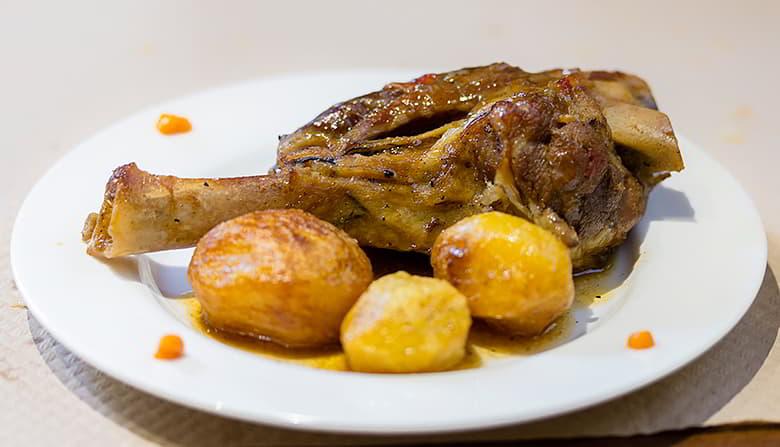
Tripe
A dish full of flavour featuring tripe cooked over a low heat, typical of the region.
Tripe is in itself a guide to where to eat in Asturias, because even though it shares the same characteristics (cut small, served with potatoes), in each area it is prepared according to some local peculiarity. With or without ham or sausage, with or without spice, with or without whatever each chacinero and chigre understands. But always a delicacy that leaves you with pleasure on your lips.
Rice with pitu
An aromatic rice cooked with pitu de caleya (free-range chicken), which gives it a distinctive texture and flavour.
Pitu meat is more like game than conventional chicken: dark in colour, tough yellow skin, huge thighs and breasts, and firm bones. This is why it requires hours of preparation and provides a unique, deep, rice-soaked flavour with a special mellowness.

T-bone steak of Asturian breed
A delicacy for meat lovers, where the chuletón of a local breed stands out for its juiciness and quality.
It must come from the two native breeds that graze in these mountains: Asturiana de los Valles, or carreñana, and Asturiana de la Montaña, or casina. And with the meat rare, of course. If possible, prepared with local wood embers.

Stuffed onions
A creative dish that incorporates stuffed onions with a mixture of local ingredients, creating a unique gastronomic experience.
Since the 1970s, stuffed onions have also been celebrated in L'Entregu/El Entrego. The original stuffing is tuna, as this Asturian dish was born as a Lenten dish. However, if you find onions stuffed with meat, don't miss them either, because they are just as heart-warming.

We could extend this list, which only covers the basics, but it is up to you to continue discovering this particular Asturian cuisine, the mountain cuisine, which has as many typical dishes as that of the sea, and which explains in an ineffable way how the character of this land and these people has been forged. There isno better way to end a day of hiking, cycling or strolling through the Asturian countryside than by eating your way through its forests and meadows!

Subscribe to our newsletter and take advantage of offers, discounts, and news
Subscribe




